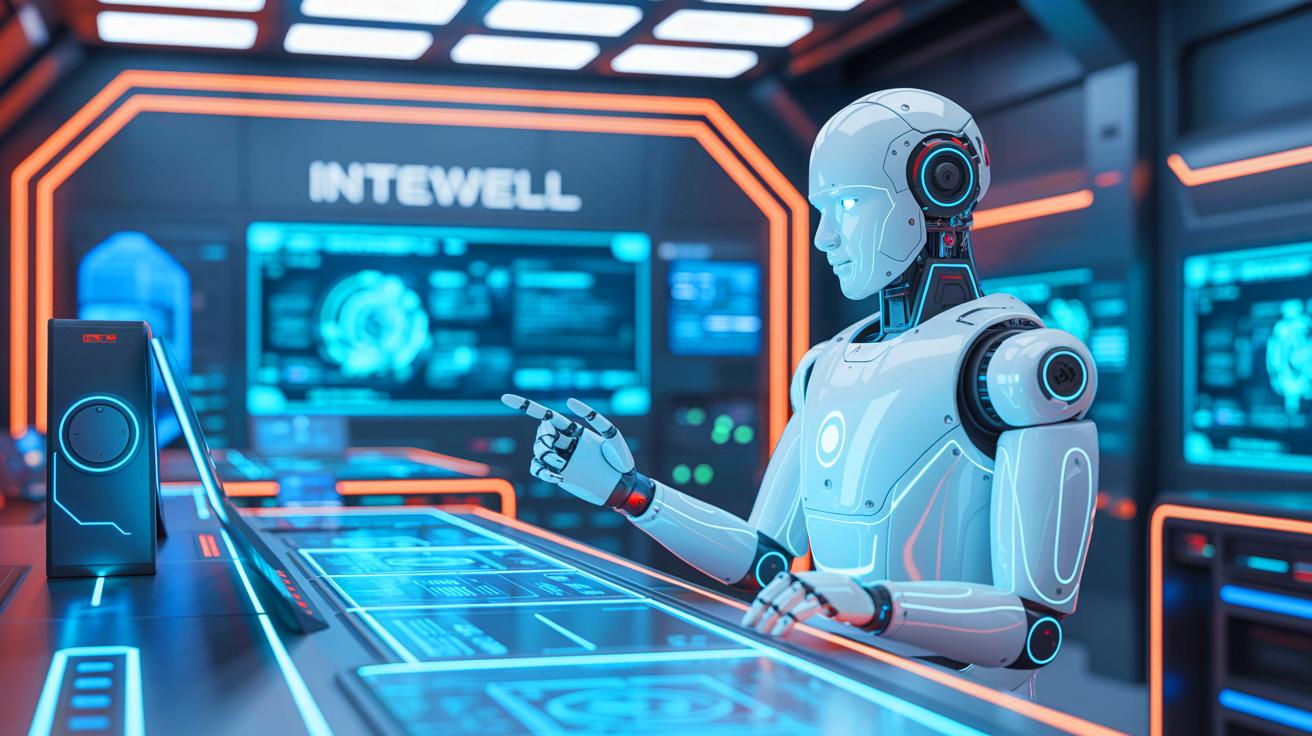### The Rise of Intewell: China’s Unified Operating System for Robotics
🚀 Intewell is a new unified operating system for robots, developed by Beijing-based Kyland Technology, aiming to reduce reliance on foreign technology.
🔧 The system integrates functions from chip level to application-level tasks, enhancing robot processing capabilities under a single software umbrella.
🌐 Compatibility with both domestic and international chips ensures flexibility, aligning with China’s broader strategy for technological self-reliance amid geopolitical tensions.
📈 The introduction of Intewell coincides with rapid growth in China’s robotics industry, transitioning from lab environments to commercial deployment.
—
China has taken a significant leap forward in its technological landscape with the introduction of Intewell, a unified operating system for robots. Developed by Beijing-based Kyland Technology, this groundbreaking software marks a decisive step toward technological self-reliance. The launch is strategically timed, aligning with a notable acceleration in China’s robotics industry, which is witnessing a rapid transition from experimental labs to commercial deployment. Intewell aims to create a cohesive framework that integrates all functional layers of robotics—from chips to application-level tasks—enhancing processing capabilities while reducing dependency on foreign technology. This initiative sits at the heart of China’s broader strategy for innovation and self-sufficiency in the face of global challenges.
### The Strategic Vision Behind Intewell
The vision behind Intewell is articulated by Kyland’s chairman, Li Ping, who emphasizes that the system is crucial for decreasing dependence on foreign technology. By building robotics architecture on domestic foundations, Intewell illustrates China’s commitment to technological independence. The system’s compatibility with key domestic chip manufacturers like Huawei, Loongson, and Hygon Information Technology underscores this goal.
Equally impressive is Intewell’s flexibility, as it supports both international chips and various architectures such as Arm, x86, and RISC-V. This adaptability represents a practical approach during China’s transition to enhanced self-sufficiency. The introduction of Intewell aligns with the national agenda to localize critical technologies in artificial intelligence, robotics, and semiconductors, making such efforts increasingly urgent in light of rising geopolitical tensions and export restrictions from other countries.
### Accelerating Robotics from Lab to Production Line
China’s robotics industry is undergoing remarkable transformation, swiftly shifting from experimental labs to active commercial deployment. A recent report from TrendForce reveals that six out of eleven Chinese humanoid robot firms initiating mass production in 2024 are expected to each produce over 1,000 units within the year. This rapid evolution reflects the industry’s momentum but also highlights a significant challenge: the lack of a unified AI operating system capable of handling general-purpose robotic tasks without needing multiple separate programs.
Industry leaders, including Wang Xingxing, CEO of Unitree Robotics, suggest that companies which can deliver comprehensive AI frameworks will define the future of robotics. In this context, Intewell symbolizes a critical milestone in establishing a self-sustaining high-tech ecosystem. Notably, Kyland’s subsidiary, Guangya Hongdao, entered into an agreement with Hygon Information Technology on the day of Intewell’s launch, further solidifying its incorporation into the domestic chip sector.
### Intewell’s Role in the Global AI Race
With Intewell, China positions itself as a formidable player in the ongoing global AI and robotics race. The system’s ability to streamline processing capabilities under a unified software umbrella presents a competitive edge in efficiency and effectiveness. By integrating functions across all operational layers, Intewell allows robots to interact more seamlessly with their environment, enhancing their utility across various applications.
The relevance of this technological advancement intensifies as China aims to bolster its domestic chip ecosystem. By supporting both domestic and international chip manufacturers, Intewell creates a flexible and adaptable architecture that can thrive amidst diverse technological landscapes. As geopolitical tensions rise, maintaining technological independence while remaining globally competitive becomes crucial. The introduction of Intewell is not just a technological leap; it’s a strategic maneuver that positions China as an influential contender in the global race for AI and robotics dominance.
### Future Implications and Open Questions
The launch of Intewell signifies a pivotal moment in China’s technological journey, offering a glimpse into a future where intelligent machines are powered by homegrown innovation. This development not only reflects China’s ambitions for technological self-reliance but also suggests potential transformative changes in global robotics. Integrating a unified operating system like Intewell could revolutionize how robots engage with their surroundings, paving the way for advanced applications.
As the world monitors China’s progress, critical questions arise: How will other nations respond to this technological leap? What implications will Intewell have for global supply chains and the international robotics market? As China continues to innovate, the reverberations from Intewell’s introduction will likely impact the global technology landscape in profound ways.


